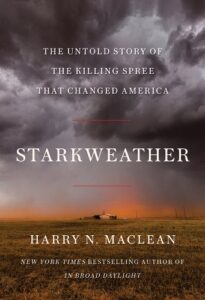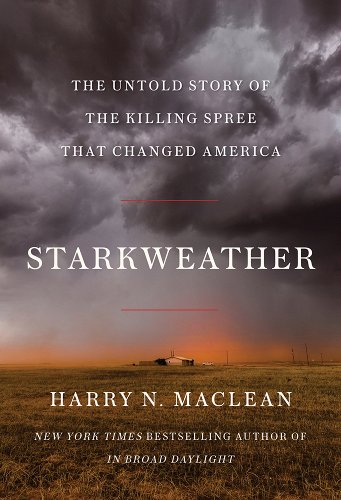In 1958, America was at the peak of the post-WWII boom. The country had emerged from the war as the strongest economic and military power in the world. Prosperity abounded. Returning soldiers went to college on the G.I. Bill, which also offered longer-term loans to allow the purchase of larger homes in areas that would come to be called suburbs. The middle class was expanding. Wages were increasing. Production was up. Ninety percent of adults had cars. Consumerism was flourishing almost without limit; the acquisition of material goods soared: Frigidaires with freezer compartments to hold four TV dinners, dishwashers, second cars, vegetable slicers, Electrolux vacuum cleaners—anything to increase the comfort of modern living. By the mid-1950s, two-thirds of U.S. households had at least one telephone. The baby boom had hit: 70.2 million people were born between 1946 and 1964, the largest generation in American history. Families were now wealthy enough to have more children and buy bigger houses to hold them. They could afford to travel, and many did so on propeller planes like the DC-3 and DC-4. Passengers could walk right through the airport door onto the tarmac and up the steps to sit wherever they chose. Smoking was allowed after takeoff. (You could also smoke in the waiting room of your doctor’s office. Some doctors even recommended smoking to decrease stress.)
In 1950, 9 percent of households in the United States had televisions. By 1959, the number had risen to 86 percent. The average viewer watched almost three hours of TV a day. TV stations went off the air at midnight to the music of “The Star-Spangled Banner.” Most people still got their news from the newspapers, but by 1958, coaxial cables allowed for the transmission of images from the local stations to the networks in New York and the evening news. With the introduction of video, a local story could be shared all over the country on the evening news. The era of mass media had arrived.
In 1950 there were forty million cars on the road in America. By the end of the decade, that number had doubled. Cars signaled the new, space age America; they grew bigger and flashier with long tail fins, shiny strips of chrome, wraparound windshields, and burnished hood ornaments. They ran hard and fast with powerful V-6 and V-8 engines.
There were gross inequities in the postwar boom. The prosperity mainly benefitted the white middle class. Women were expected to stay home and raise kids, and most of them did. Black people in many southern states still lived in poverty and were subject to repressive Jim Crow laws. In 1955, Rosa Parks refused to give up her seat on a city bus in Montgomery, Alabama, and set off a boycott. That same year, Emmett Till was murdered in Mississippi. In Brown vs. Board of Education, the Supreme Court found “separate but equal” school systems to violate the equal-protection clause of the Constitution. The South resisted school integration with violence. In 1959, President Eisenhower, who had been opposed to the integration of the army while he was a general, sent the 101st Airborne Division to Little Rock to force the integration of public schools. The great migration of Black people to the northern industrial cities, which had begun in the 1920s and ’30s, grew in force after WWII and maintained into the 1950s.
There were literary and musical stirrings against the conformity of the time. The Beats surfaced in New York and made their way to San Francisco, where Lawrence Ferlinghetti opened City Lights Bookstore. He published “Howl” by Allen Ginsberg, which was seen as an original and powerful protest against the middle-class values and numbing sameness of American culture. Pete Seeger wrote and sang a song entitled “Little Boxes,” which made fun of the cookie-cutter homes of the growing suburbs. Jackson Pollock threw canvases on the floor and splashed paint on them. Dr. Salk developed a vaccine for polio.
There were things to fear: Joe McCarthy launched a fanatical investigation into supposed Communists in the State Department and Hollywood. He was brought down in part by Edward R. Murrow, a newsman who broadcast the war from London and became the first celebrity television journalist. Ike had put the Korean War to bed, but the Cold War was raging. The hydrogen bomb was exploded in the atolls of the Pacific with one thousand times the force of the atom bomb dropped on Hiroshima. School kids crouched under their desks when the sirens sounded. Rock and roll surfaced in the form of musicians like Elvis Presley and Jerry Lee Lewis whitewashing Black gospel and rhythm and blues. Elvis, with his gyrating hips and suggestive lyrics, was seen by many parents as a serious threat to family values. But Elvis was more than music; he was the force behind a lot of the cultural changes forming on the horizon. As John Lennon would say, “Before Elvis, there was nothing.” In high school, there were good girls and bad girls, football players and bookworms. Every boy had a bike, but few were locked up on the school bike rack. Change was on the way, but it wasn’t here yet. If people had heard of Vietnam, it was probably as a French colony in Indochina.
The homicide rate (murder and non-negligent manslaughter) in the country had dropped from 4.6 per 100,000 in 1950 to 4.0 in 1957. (By 1973, the rate had more than doubled to 9.4 per 100,000.) Drugs, even marijuana, were unheard of in middle-class America. Ozzie and Harriet and their two sons, David and Ricky, were the beloved American family. DNA was discovered, drive-in theaters now offered in-car heaters, Golden Arches sprung up like weeds, and the second volume of the Kinsey Report—Sexual Behavior in the Human Female—was published.
That was about it. The major vibrations of the time were peace and prosperity (although, later on, the more astute claimed to have picked up the ominous rumbles down the road). There was a stability and predictability to life that hadn’t been seen in the country since before the Great Depression. Life was good, and the future looked even better.
If the 1950s in the United States was a time of innocence, Lincoln, Nebraska, was the beating heart of it. The population had grown to 128,000 by 1958. It was the home office of thirty-three national insurance companies and had packing plants and wholesale warehouses. Ten thousand students attended the University of Nebraska, on the edge of downtown. The football team was on the verge of national fame. The rains on the prairies had been good the previous few years and crop prices were high, which brought farmers into town to shop retail and invest in new equipment. Lincoln was a hub of railroad activity, with five lines running through town. Although there were still some two-party phone lines, Lincoln had gotten direct dial, and the phone book contained detailed instructions on how to operate the black clicking wheel. Above all, the city was a safe place to raise a family. From 1947 to 1957, seven murders were reported in the city. All seven were eventually solved. In the same time period, six manslaughter incidents were reported, and five of them were solved.
So the stage was set as 1957 came to a close. The country was filled with self-confidence and a bustling optimism. There was no real fear of an evil out there, no real fear of an evil inside. As cruel as war was, it was never random. You knew the face of your enemy. Someone won and someone lost. Play by the rules, be decent and respectful of another, take care of your family and go to church, and life will be good. Yes, terrible things happen, like a car-versus-train accident that kills a family of four, but seldom at the intentional hand of another, seldom at the arbitrary hand of another here, in Nebraska.
The American lexicon did not include the word mass murderer. Or spree killer. Or serial killer. Not that some hadn’t existed in the past, but they were never mythologized or given a categorical title. They hadn’t been brought into your living room through the eye of television or given front-page coverage day after day for weeks.
Enter Charlie Starkweather and Caril Ann Fugate.
***
I was fifteen in January 1958. Caril was thirteen; Charlie was nineteen. We all lived in Lincoln. My middle-class home was a little over a mile from the house where, at the end of that month, a wealthy couple and their maid would die. I knew their son. My older brother, Mike, was in shop class with Charlie. The only thing I knew of Belmont, where Caril lived, was that it was on the wrong side of the tracks. Both Mike and I were away at prep school when the killings happened, as was the son of the wealthy couple. I went on to college and became a lawyer and writer in Denver. I drove to Lincoln two or three times a year to visit my parents—mother and stepfather—and siblings, never staying more than a day or two. As the years passed, I thought about writing the Starkweather murder story on several occasions, but I always veered off. I sensed something, I guess.
It’s amazing how sometimes life-changing decisions can turn on the smallest point. The sail catches a slight gust of wind, swings one way a little, and there’s your future.
I wrote only about crimes with some hook that I could use to explore larger themes, like vigilante justice or repressed memories or the indelible imprint of past crimes on the present. In 2021, my wife, Julya (Hulya), and I were in Florida for the winter. In the mornings she walked the beach and collected shells. I wrote. I had started a novel; there were two threads, one about a badly busted-up marriage and the other about a young couple somewhat like Charlie and Caril, who were traveling a blood-splattered road of escape through the Sandhills. One day, when I was trying to get a feel for my fictional Caril, I decided to look at the real one. I found her on YouTube, in a 1988 episode of a show called “A Current Affair.” It was startling to see the fourteen-year-old girl as a middle-aged woman. She was dramatic and very convincing in her claim of innocence. Then I took a slap in the chops: Well, was she guilty? Everything I’d ever seen or read about her almost assumed ab initio that she was. She had been tried and convicted, but that was in the justice system of the 1950s. Maybe the issue needed to be reexamined after all these years. I knew how to look objectively at the evidence of a conflict or dispute and construct a story of what happened. I had done it for years as a magistrate in juvenile court and an arbitrator.
I flicked the TV off and flopped in a chair. I closed my eyes, waited for the curtain to drop. I was seventy-nine years old. If I went in, I would be eighty-one when I came out. If I was going to write this story, about the crime but also about the place where I grew up, I should have done so thirty-five years ago. Now, I wasn’t sure I had the heart for it. It would be a rough couple of years. And there was Lincoln. The 1950s had not been a good time in my life. My gut was against it.
My approach to writing a book was complete immersion. I turned over every rock, knocked on every door, drew endless lists of names and questions and went after the answers one by one. For days, weeks, months, years if necessary. I tried to research and absorb everything. This story would be different. I’d be walking through my past. Before, I’d been on the outside looking in. Now, I would be on the inside looking in.
Bruce Springsteen wrote a song about Nebraska. Caril had heard it. She grew disturbed on the TV show as she described the line in the song when Charlie says he and Caril had had “some fun” on the murder rampage. Fun? She cried.
That was the small point, the shift of the sail in a mild gust of wind. If I had picked one of the other videos, or looked away the moment she lowered her head in despair, I might have shrugged off the impulse and gone on with my novel. So in the end, I ignored my gut and went with my head: Was Caril Ann Fugate a murderer? Sort that out, and answer the question, and there’s the story.
Not that that lessened the lingering sense of dread. I wanted out the minute before I agreed to write this book and the minute after. But I was in. I usually wrote from 6:00 a.m. to 1:00 or 2:00 p.m. One afternoon about six months or so into the writing, I exited my office and met Julya in the hallway. She stared at me for a moment, then suggested I go into the bathroom and take a look at myself in the mirror. “Pass,” I said, and made my way outside. Thank God for the Florida sun, I thought. January in Nebraska could freeze your blood.
So, one day in May 2021, I packed up my car and headed out northeast on I-76 and then east on I-80 to Lincoln. By the time I hit the Colorado desert, I was filled with a mixed sense of foreboding and determination. There was another thread: I knew how people looked at Nebraska. Flat. Boring. Endless. I was going to show them beauty. I wanted to take them through the Sandhills; Float them down the wide and deep Niobrara River 9owing east from Valentine and past Bassett, the little ranch town where I lived for a few years after the war, when my father and sister were still alive; and walk them up the mile-and-a-halflong trail to the top of magnificent Scotts Bluff, where they could look down on the countryside and imagine the endless line of immigrant wagons and animals and people trudging their way alongside the North Platte to Oregon.
***
In an effort like this one, the author seeks to come up with a coherent narrative of events. One doesn’t—because one can’t—attempt to establish the actual truth of what happened; rather the author sets forth a (hopefully) convincing presentation of the way he sees it and why he sees it that way. One obstacle in this effort was the massive number of documents involved, because of the two trials and many confessions; another was the fact that most of the main participants have passed on. Another stems from the fact that the critical part of the story is the series of ten murders in eight days. There are only two people who know the truth of what happened from January 21, 1958, to January 29, 1958. One of them, Charlie Starkweather, gave at least ten different versions of the murders. Almost every time he spoke or wrote something about the spree, his story changed on key facts. The other, Caril Fugate, gave pretty much the same story in and out of court; some of it jibed with Charlie’s, but many of the critical parts of it—who was where and who did what to whom during the spree—are diametrically opposed. This is why Part II, entitled “The Killings,” sets forth two versions of each killing: one from Charlie’s point of view, the other from Caril’s. The reader will read the versions that came from their mouths, as best as I can stitch them together.
Part I, “The Setup,” introduces Charlie and Caril and their relationship. Part III, “The Trials,” takes the reader in some detail through the trials of both Charlie and Caril. In IV, “Guilt or Innocence,” I lay out my analysis and conclusions as to who killed whom, murder by murder, for the reader to either accept or question, in whole or in part. Part V, “The Consequences,” describes the effect of the killing spree on various characters in the book. In Part VI, “Impact,” I discuss the impact of the murder spree on the culture of America.
___________________________________






